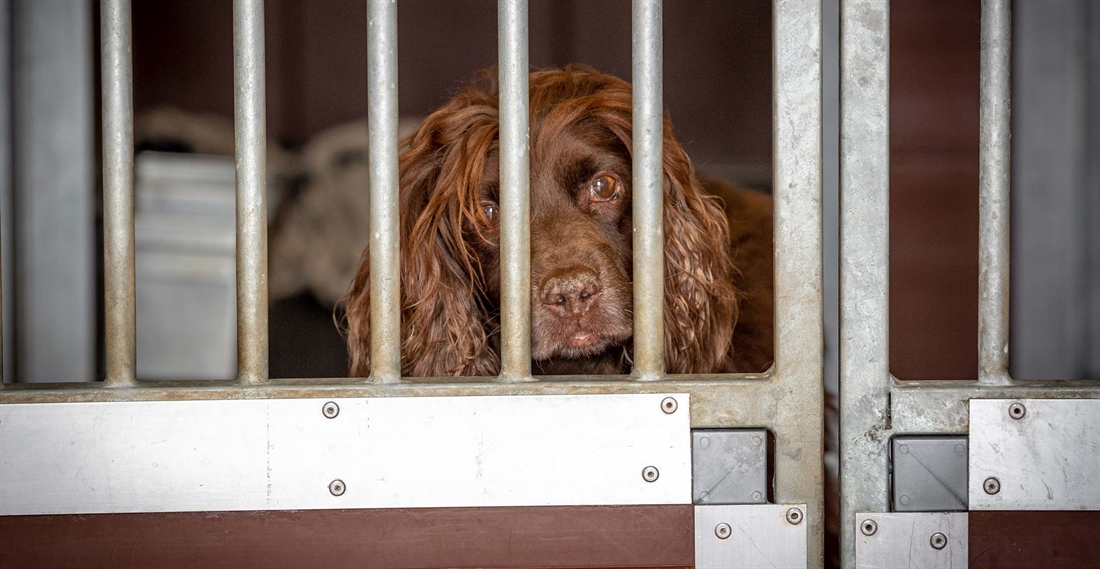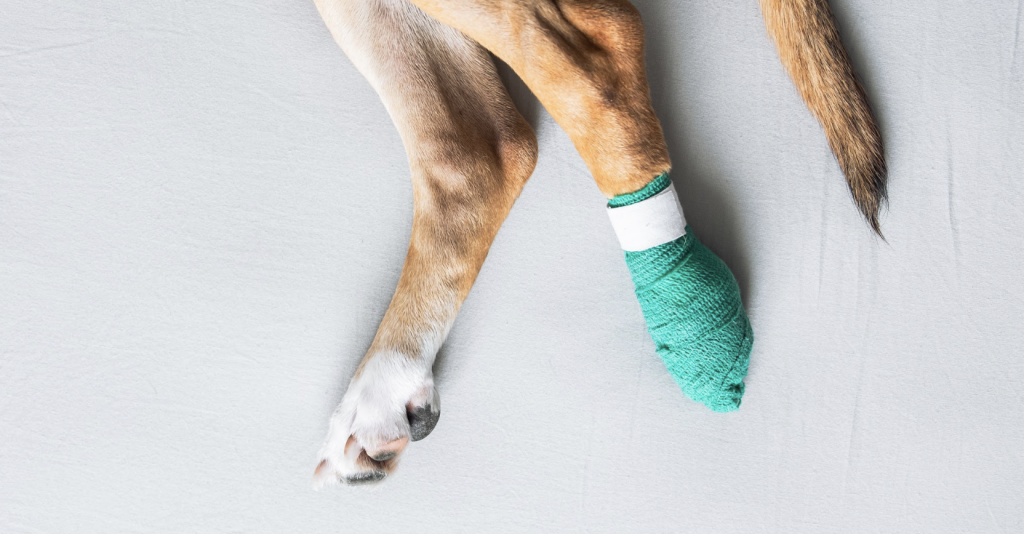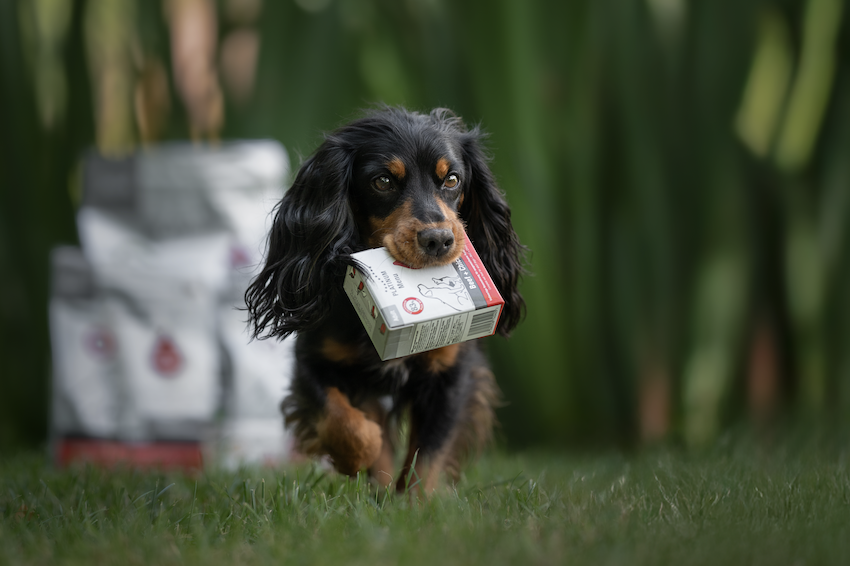How To Set Up The Perfect Outdoor Kennel For Your Gundog
There are a number of things to consider when investing in a kennel for your gundog, says Field Editor Ben Randall.

Field Editor, Ben Randall has sat down with us to talk about the importance of investing in a good outdoor and indoor kennel. There are a number of things to consider when investing in a kennel for your gundog, from whether a kennel is comfortable and hygienic for your dog, all the way to how convenient and practical the kennel is to you.
There are a number of points to consider when planning for and investing in a kennel for your gundog. Here, Ben outlines six factors that will be crucial in considering how to best set up an outdoor kennel that is safe, comfortable, and practical.
Which Is The Best Dog Kennel For Me?
Whilst outdoor kennels can provide a lot of space, I personally like my kennels to be fitted within a building as the security is far better. When a kennel is inside another building, whether that be a stable, barn or shed, the dogs are also left in a calm, quiet environment out of direct sunlight, rain, wind and frost ensuring not only their safety but also wellbeing. Another advantage of situating kennels in a covered building is that you will be able to clean and feed your dog(s) in a warm and dry environment.
There is never an excuse for a day off from foundation training with younger dogs due to the weather. Because of this, it might be best to keep your gundog in an indoor kennel. As a trainer, you’ll not feel rushed to get out of the rain or wind, and the dogs will sense this and be calmer and more relaxed. Such kennels fit the dogs’ requirements as well as their training needs and routines.
Of course, it is not always possible to situate kennels within another building, and you may not be training a gundog anymore. If an outdoor kennel would suit you and your dog best, it is important to consider a few factors in building your kennel:
1. Security
Keeping your dogs safe is of vital importance in today’s day and age. Wherever possible, try to position kennels out of view of passers-by (i.e footpaths, roads etc.) so that they do not attract attention in the first place.
Good quality locks will help to an extent, but they are not completely fail-safe. There are now other security options including CCTV that act as a deterrent to potential thieves.
2. Kennel Material – Wood or Plastic?
Over the years I have used all types of kennel systems, from blockwork to wooden, but since moving to bespoke plastic systems with aluminium reinforcement (mine are from Designer Kennels), I will never use anything else.
Wooden kennels very often have insulation problems, are chewable, and are harder to keep clean as the wood soaks up all fluid and dirt. You will also find that after 5–10 years they need to be renewed, and a secondhand – and a chewed, wooden dog kennel is worth very little.
Plastic designs, however, with aluminium strips to combat chewing, are quick-drying, easy to clean and look new after years of use. Because of this, they will hold their value well if a new system is required (e.g. you find yourself with more gundogs).
3. Heat Lamps and Insulation
Proper insulation in your dog’s outdoor kennel will keep it cool in the summer and warm in the winter. There are various materials available such as reflective foil, polystyrene, or even carpet! It’s best to ask expert advice once you know what your kennel will be made from.
I also highly recommend getting a heat lamp. All of my kennels are fitted with heat lamps, which are excellent for drying dogs out quickly and thoroughly after a day in the field.
4. Outdoor Kennel Bedding
Which bedding you go for is largely dependent on whether or not your dog is toilet trained. If your gundog is still learning, Vetbed makes imitation sheepskin bedding that is absorbent, warm, and washes easily. It is therefore very hygienic and a perfect fit for those dogs that are still learning.
For dogs that are toilet trained, a more permanent, insulated bed might be more practical. I have also used dust-free wood shavings, and the dogs seem to like bedding down in these. They are very warm and absorbent, although they will need changing regularly.
5. Kennel positioning
Wherever possible, try to position kennels so that the runs are south-facing and the sleeping quarters north-facing. This way, dogs can enjoy the sun in their run if they wish, but the sleeping quarters will remain cool.
It is always worth considering the direction of the prevailing wind so that it is not channelling into the kennel. And look at the gradient of land immediately around you – you don’t want water draining downhill and waterlogging the kennel! Think about how you can position your kennels so that they are sheltered by features such as shelterbelts, walls, or hedgerows.
6. To share or not to share?
Dogs are pack animals by nature, so they will enjoy the company of a kennel-mate. The downside to this is that some dogs will constantly try and play with their roommate. Dogs need a place to settle and enjoy their own downtime. It is also difficult to leave dogs with chew bones if they are in company as they can become possessive over them. The last thing you want is dogs fighting. This all comes down to the temperament of your gundogs and how you want them to spend their downtime.
Taking The Next Steps
Whether to kennel your pups or not is one of the biggest questions we gundog owners ask at the start of a relationship with our new four-legged shooting companion. Whatever you choose, it’s always best to prepare for any scenario – as your pup might change as it grows!
We recommend speaking to seasoned gundog owners and learning more about the breed of your dog. Make sure to sign up to our newsletters or subscribe to the Gundog Journal to stay up to date with the latest news and advice in the gundog world!
Related Articles
Get the latest news delivered direct to your door
Subscribe to Gundog Journal
Unlock the full potential of your working dog with a subscription to Gundog Journal, the UK’s only dedicated magazine for gundog enthusiasts. Published bi-monthly, this authoritative resource delivers expert training advice, in-depth interviews with top trainers and veterinary guidance to help you nurture a stronger bond with your dog.
With stunning photography and thought-provoking content, Gundog Journal is your essential guide to understanding, training and celebrating your working dog.
Save 10% on shop price when you subscribe, with a choice of packages that work for you. Choose from Print & Digital or Digital only with each journal delivered directly to your door or via the app every other month, plus access to past issues with the digital back issue library.







